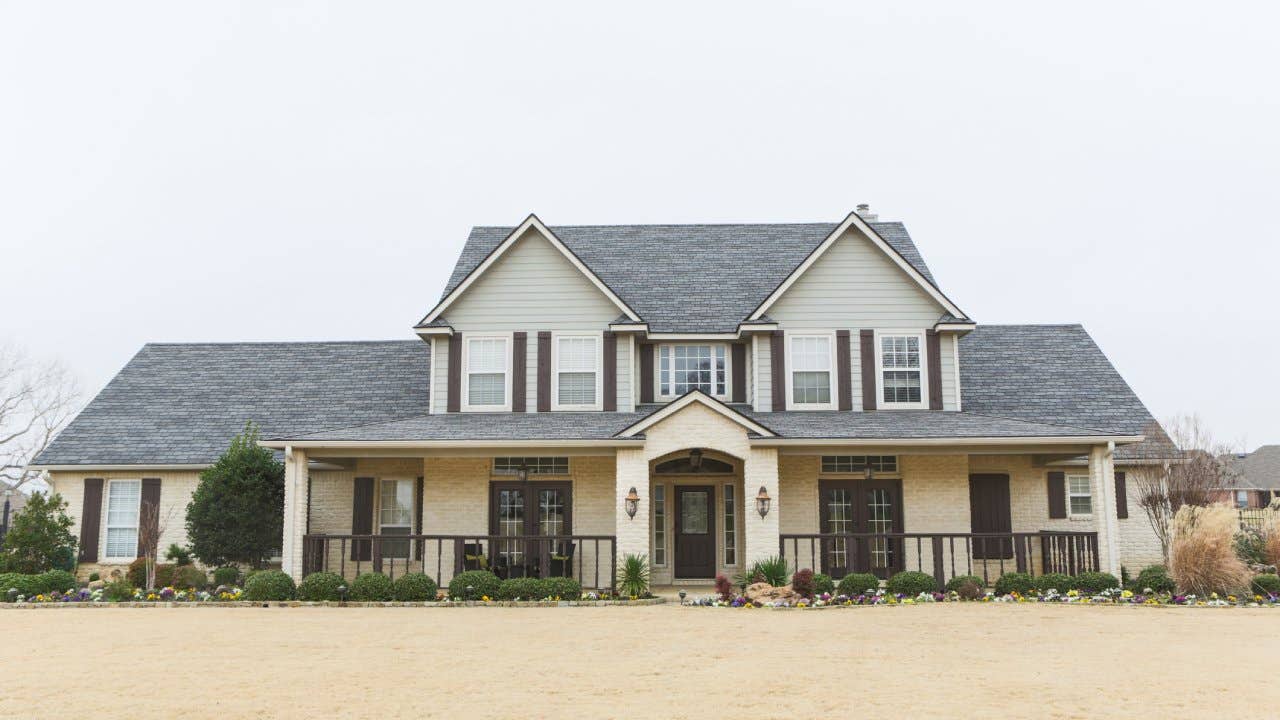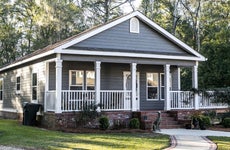What is a spec house?

The Bankrate promise
At Bankrate we strive to help you make smarter financial decisions. While we adhere to strict , this post may contain references to products from our partners. Here's an explanation for .
It’s no secret that buying a home in today’s real estate market is challenging for many house hunters. Home prices are continuing to rise in many markets, and while there are some signs of softening sales, listings still move at a lightning-fast pace: The median time on the market is just 14 days, according to the National Association of Realtors.
To increase your options on the homeownership path, you might want to consider purchasing a spec house. It’s a new construction that’s been built “on speculation” — not for any particular client but in the hopes of attracting one. Not only do spec houses tend to be cheaper than other new builds, they also tend to be in turnkey condition.
Is a spec house worth your speculation? Here’s everything you need to know.
What is a spec house?
Spec house is short for speculative house. It’s a new residence constructed by a professional home builder.
“Typically, spec homes are constructed on tracts of land the builder intends to turn into a development at some point in the future,” says Kerry Sherin, a consumer advocate at Ownerly, a home valuation company. “These homes offer their future owners the convenience of buying a new property without having to wait months or even years for completion.”
To appeal to a wide range of homebuyers, builders include features that they “speculate” are things that people want in a house, such as an open layout, kitchen islands, walk-in showers, granite countertops, or anything else that is currently trending in residential real estate.
So “spec” could also stand for “specifications” — the home’s based on a set of specs that are often quite high-grade and state-of-the-art. It’s completely move-in ready by the time a potential buyer sees it.
Spec home vs model home
Don’t confuse spec homes with model homes, those sample houses in a subdivision that demonstrate the type and style of residence in the new neighborhood (something like the floor models on display at an auto dealership).
Like spec houses, model homes are constructed on large parcels of land by a builder or developer. And both function as showpieces, demonstrating what the developer can do. But model homes are essentially display houses that the developer decides to sell after the subdivision is pretty much filled up. In contrast, spec homes are built to be sold, and to attract buyers.
As a result, spec homes are ritzier. “Spec homes usually have features that are considered upgrades, and would not be included in a model home,” Sherin notes. And they are more customizable. “In some cases, the buyer will even be given the option to select some of the features or finishes for the home, if they purchase the home in the middle of construction.” In contrast, model homes are sold “as-is.”
Model homes tend to be less unique because they are built based on only a few different floor plans; the builder doesn’t put a personalized touch on each home individually. Also, while new, they might show some signs of wear-and-tear after months of people trooping through them.
As a result of all this, model homes tend to be cheaper than spec homes.
What do spec houses cost?
The cost of a spec home depends on a variety of different factors. Some of the factors that impact the price include:
- Location
- Square footage
- Design
- Amenities/features
- Cost of labor
- Land size
- Building materials
In general, spec houses are more affordable than some other types of houses. For example, a spec home should be less expensive than a comparable custom-build home, where you design every aspect of the house, from the roof materials to the lighting fixtures. However, spec homes are often more expensive than the standard new construction homes the developer’s offering in an area, because they’re showier and more finished. They will certainly be pricier than a model home for a subdivision.
Pros and cons of spec houses
Before you purchase a spec home, it’s important to weigh the pros and cons. Here are some things to consider if you are thinking about investing in a spec house.
Pros
- More affordable: If you’re on a budget, a spec house might be a good way to get a little luxe for less. Builders are often willing to offer buyers a deal to make sure their spec homes get sold promptly.
- No waiting: Like the idea of a brand new build, but can’t wait six months to a year for construction? The spec home is ready immediately (or close to). No having to deal with contractors, either.
- Turnkey condition: You don’t need to worry about renovations, repairs, or upgrades before you can move in, which is not always the case with homes that are already built. Every feature is fresh and new.
Cons
- You can’t choose the location: With a spec home, you don’t have any control over the location. If you love the home but don’t love the ‘hood, you might have to walk away.
- You have fewer choices: For many people, the whole point of a new construction is the chance to build their dream house. But with a spec house, typically, the builder has a vision and determines everything from the flooring to the paint. While you may have some options (choose light fixtures, cabinet pulls or other finishing touches), you won’t be able to customize the major things like the roof. You can remodel later, of course, but that means more money.
- You could pay for unnecessary features: Because you can’t usually customize a spec house, you might end up paying for things you don’t want or need — like a three-car garage when you’ve only got two autos. Well-priced as the spec house might be, it’s not a good deal if the price reflects features you’ll never use.
How to buy a spec house
The process of buying a spec house is much like the process of buying any other home. These homes will typically be listed on the MLS and your real estate agent can give you a tour. You might also have the opportunity to meet with the builder who can explain more about the amenities and features, and speak to the construction and building materials.
If you want to make an offer on a spec home, you probably have some room for negotiation, just like you would with an existing home. However, there’s usually a floor price that the builder has set: They’ve got to recoup their investment, after all. Remember, these homes are newly constructed, so they are in pristine condition and have up-to-date features and fixtures.
In terms of financing, most lenders will give you a regular mortgage for a spec home. Before closing, it’s a good idea to get a home inspection, even though the home was just built. Getting a second opinion from a third-party home inspector or contractor will ensure that nothing was missed, no corners were cut, and everything is as it should be before you move forward.
FAQ
-
A spec home is a house that is move-in ready, and is constructed based on a set of specifications that the builder believes will appeal to many homebuyers. A custom-built home, on the other hand, is a unique property. Its construction was commissioned by a particular buyer, and the house is designed and built to their specifications.
-
In general, you can’t make major changes to a spec home. The builder determines all aspects of the construction, including the aesthetics, like paint colors, siding, and landscaping. If you purchase the home in the middle of construction, you may have some leeway to make adjustments, but it’s not a guarantee.
-
The right time to buy a spec house is any time you’re in the market for a new home. In tight markets, spec homes will often appeal to home buyers who’d like to stretch their funds, and get a new, modern property without the expense and hassle of building their own.Spec houses usually are on display during prime selling season: spring through early autumn. Keep in mind that if you live in an area with harsh winters, fewer spec houses may be on the market in the colder months. Therefore, if you’re interested in a spec home, you should look around during the spring, summer, or fall, when more houses may be available.
Related Articles



